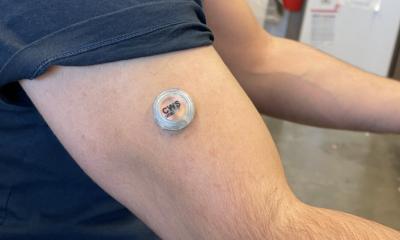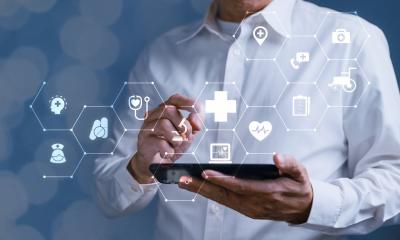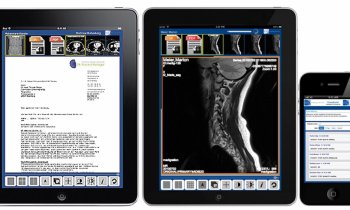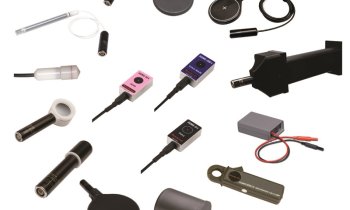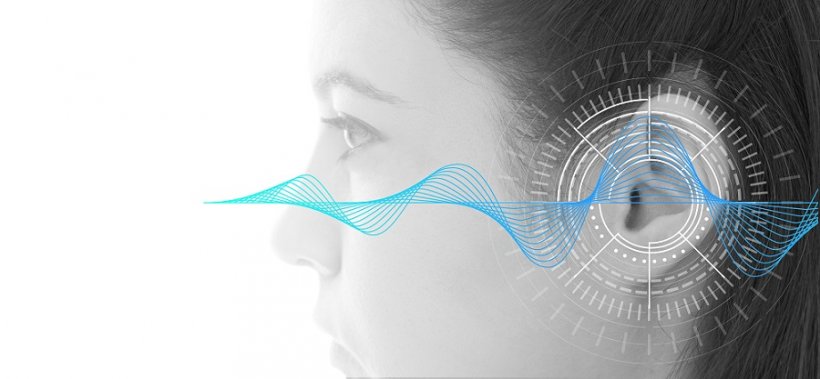
Source: Shutterstock/Pixsooz
Article • Subset of wearables
From the wrist into the ear – the potential of hearables
Progress in miniaturising sensor technology has opened up new possibilities for monitoring vital signs outside the hospital environment. A subset of wearables are the so-called hearables – in-ear devices that are well suited for long-term monitoring as they are non-invasive, inconspicuous and easy to fasten. Hearables offer two major benefits: their proximity to the torso and vascular system of the brain and ear is a physiological advantage and motion artefacts often seen with wrist wearables are no longer an issue for in-ear devices.
Report: Mareike Scholze
But what exactly are hearables? In a nutshell, they are wearables worn in or on the ear, additionally equipped with biometric sensors. The most frequently used devices can monitor heart rate, temperature, oxygen saturation and calorie use.
The US-American FDA (Food and Drug Administration) distinguishes two categories of hearing aids: the conventional hearing aid, i.e. a prescription medical device for people suffering from hearing loss, and the so-called personal sound amplification products (PSAP), non-prescription and non-regulated products not designed for permanent use as they enhance the hearing experience in specific situations.
Beyond these hearing aids others kinds of wearables have been introduced that defy categorization as manufacturers have realized that the ear is the perfect site to measure vital signs. Since it rarely moves, movement artefacts are drastically reduced.
For lifestyle and wellness – from AirPods to ZenBuds
Apart from enhancing the hearing experience, most PSAPs currently monitor vital signs during sports and sleep. The optical sensor in in-ear devices, such as the AirPods allows listening to music during sports with the added features that the music stops immediately when the AirPod is removed from the ear, for example during a conversation. The moment the AirPod is back in the ear, the music automatically resumes. The first-generation sports headsets promised above all an excellent hearing experience and offered pulse measurement as an additional feature.
A second field of application is the enhancement of sleep quality. Manufacturers offer in-ear devices that are pleasant to wear and not only cancel noise but also support falling asleep by transmitting different ambient sounds. Systems such as ZenBuds also monitor heart rate and sleep position. Moreover they recognize when the wearer has fallen asleep and stop the music automatically.
Healthcare applications
In addition to wellness and lifestyles applications, hearables are increasingly used for reliable and long-term monitoring of vital signs.
Electrocardiography (ECG) is the gold standard for heart rate measurement. Researchers at the Technical University (TU) Munich1 tried to find out whether in-ear photoplethysmography (PPG) pulse rate (PR) measurement devices represent a valid alternative to heart rate derived from ECG. The team compared the heart rates measured by two commercially available in-ear devices (Dash Pro and Cosinuss°One) with a Bodyguard2 ECG.
The researchers reported that despite “excellent to good levels of agreement, Bland–Altman plots showed that both in-ear devices tend to slightly underestimate the ECG’s HR values”. The results indicated that “in-ear PPG PR measurement is a promising technique that shows accurate but imprecise results under controlled conditions. However, PPG PR measurement in the ear is sensitive to motion artefacts. Thus, accuracy and precision of the measured PR depend highly on measurement site, stress situation, and exercise”.
Another application that shows some promise is the ear-electroencephalogram (EEG). Several studies, particularly with regard to monitoring nightly brain activity in patients with epilepsy indicate that ear-EEG works as well as scalp-EEG. Zibrandtsen2 and his colleagues from Denmark concluded in their study published in 2020 that in-ear EEG reliably recognizes focal temporal lobe seizures. The Danish researchers expect ear-EEG to become an important tool in clinical epilepsy monitoring and diagnosis.
A versatile hearing aid
WHO estimates approx. 466 million people to be heard of hearing – a figure expected to increase to 900 million people by the year 2050. The development of hearables will help make hearing aids affordable and reduce the stigma attached to them. Even more: hearables offer important extra health benefits.
Loss of hearing increases the probability of other diseases and disabling conditions. A person with hearing loss has a 3 times higher likelihood to suffer from cardiovascular disease, dementia and diabetes. In addition there is an elevated risk of falls and the hospital admission rate is reported to increase. Sensors that detect falls, activity tracker and tests for dementia prevention might well be integrated in a hearing aid.
A major advantage of PSAPs or hearing aids with integrated biometrical sensor technology is the fact that these devices are regularly used for listening purposes, be it music or conversations, and for telephone calls. Thus they are less likely than pure lifestyle gimmicks to disappear in the depth of a drawer after a few weeks. The combination of professionally fitted hearing aids and long-term in-ear measurement capabilities will support early detection of conditions associated with hearing loss.
Are hearables the better wearables?
Sport audio headsets with heart rate measurement, lifestyle in-ear devices with EEG technology and hearing aids with fall sensors – the market segment “hearables” has become rather confusing. Over the next few years, the combination of hearing, telephoning and listening to music plus biometric sensor technology will dramatically increase the hearable segment in the wearable market. Gardner Forecast3 expects hearables to account for the largest turnover share in the wearable market by 2022.
It remains to be seen, however, which devices will live up to their promise and how they can be used to monitor patients professionally and reliably. Current research does indicate though that new and ever smaller sensor and in-ear measurement technologies have considerable potential in clinical and telemonitoring applications.
1. EKG: https://www.ncbi.nlm.nih.gov/pmc/articles/PMC6749408/
2. EEG: https://www.sciencedirect.com/science/article/pii/S1388245717310763; https://www.frontiersin.org/articles/10.3389/fphys.2020.568886/full
3. Gardner: https://www.gartner.com/en/newsroom/press-releases/2018-11-29-gartner-says-worldwide-wearable-device-sales-to-grow-
02.01.2022



